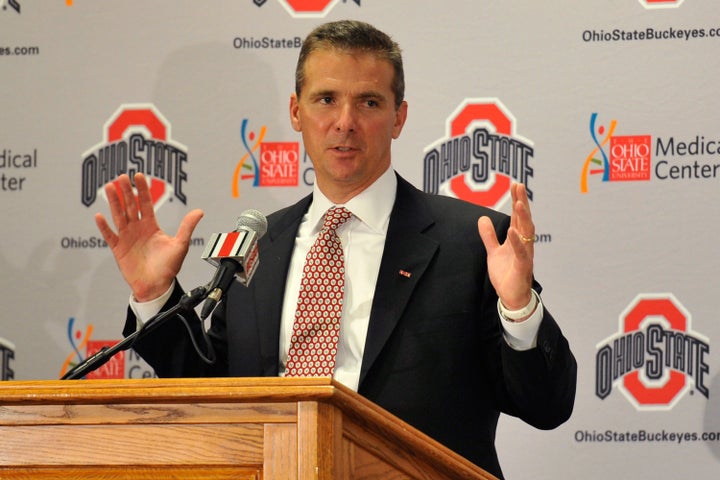
While we bemoan the salaries and gains of Wall Street and TARP funded business, there is another category of serious curiosity; the dramatic increase in salaries of football coaches at public institutions.
While the everyday American struggles to make ends meet, we look forward to cheering on our favorite college teams and their coaches. We take ownership of our favorites; talk about "my team," wear our registered school pride products. But do we think about how public institutions of higher education pay coaches millions of dollars annually to provide your weekend thrill? I do, and it makes me wonder about how richly we value and reward college coaching.
While I cozy up for a season of my favorite college sport with my fellow fanatics, I look around and wonder where the season went. With a dozen games on any given Saturday, and a couple more if you are lucky, you look up from your beer and the season is over.
They perform for us loyal fans for a little while each year while bringing on a big price tag. Of course, there is planning, recruiting, and training in the other 40 weeks of the year but in reality, their time is limited and seriously regulated by the NCAA.
The recently signed contract of Urban Meyer at Ohio State University has raised my ire about the relative value of salaries. The newly appointed Buckeye Coach Meyer signed a contract valued at $24 million over six years. Of course the price tag of Meyer's contract includes not only his annual base salary from Ohio State, a whopping $4 million per year, it includes bonuses, a private jet (including personal use), golf course membership, apparel, additional retirement contributions, and pay for endorsements such as Coca Cola. Now, how many sales of registered products does it take to pay for that giant salary? Coach Meyer will also receive perquisites for his family including the pricey benefits of a suite at football games and a dozen game tickets.
Meyer is expected to win, and if he does, he will receive bonuses for bowls and championships. Is that not the point of providing a rich salary: winning? For the average Joe, it equates to showing up for work every day, do what you are supposed to, and you will receive a bonus for doing your job. Hogwash, or in this case, a more appropriate descriptor is: Nuts!
Meyer is not the highest paid college football coach; That prize goes to Nick Saban of Alabama with a contract valued at $32 million over eight years.
How is this for a raise in average salaries of major school football coaches?: 55 percent over six seasons.
USA Today found that in 2006 the average pay for major college coaches was $950,000. The average compensation in 2011 is $1.47 million.
To provide perspective, the average projected increase in pay for lucky fans is 2.86% for companies who are providing increases in 2011.
According to the Chronicle of Higher Education, salaries of top public college presidents (2010 data) range from a total compensation of $1.8 million at Ohio State University, $905,000 at University of Washington, $783,000 at University of Michigan, and $728,000 at Arizona State. A mere fraction of salaries of top college football coaches and they are providing leadership for multi-billion dollar institutions every day, year around.
The reality is that coaches have created their own salary market, a task that the rest of us cannot afford to do. In this economy, we don't have the luxury of holding out for the highest bidder. Most of us take what we can get. But, they have driven up the market by making demands of public institutions that would be a fantasy to most. It's about "me too" and drive up the next bidder.
A close Buckeye friend of mine said, "But look at all of the money that Coach Meyer will bring into Ohio State. He will bring in much more revenue than he makes." But, do coaches bring money into the schools or do they take more than the deserve? Sure, fans will purchase licensed products with a return of rich royalties to the college but they are generally distributed outside of the athletic department budget. And the benefit goes to...?
Again, these are public institutions but athletic departments are their own cost center, revenue generating budgetary units. A common misconception is that athletic departments bring in cash and share the wealth with their colleges; Not so much, folks. You hear of the occasional donation or percent of profits allocated to the school's public funds but it's not as common as you may think. More commonly, they break even, go in the red, or even take money from the college's revenue.
In fact, the late Athletic Director of University of Michigan Don Canham was famous for balancing his athletic budget. He claimed that 99 percent of athletic departments were not able to do it but times were different, salaries were different.
It's all in the game of who can you get and how much will you pay for the privilege.